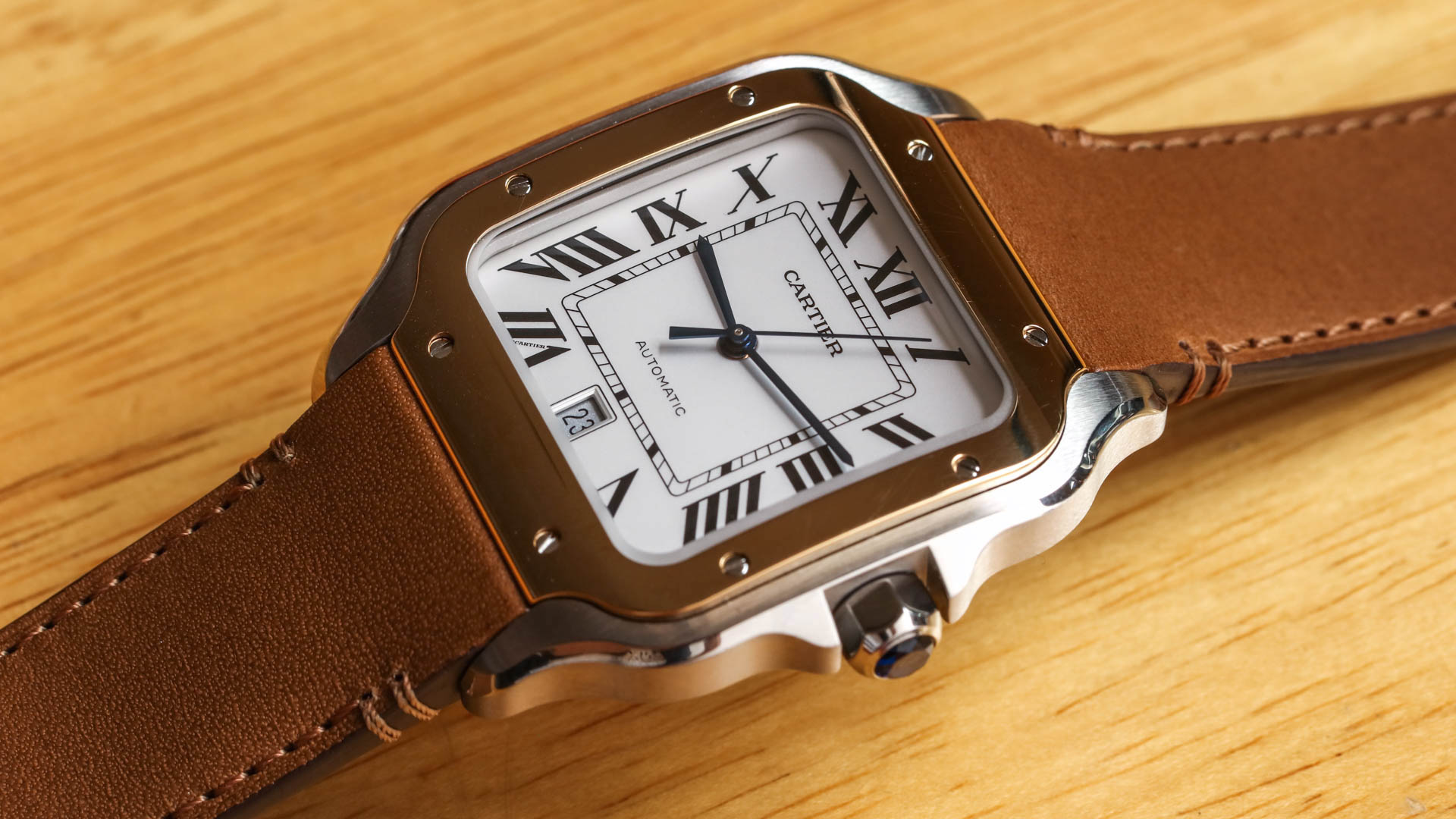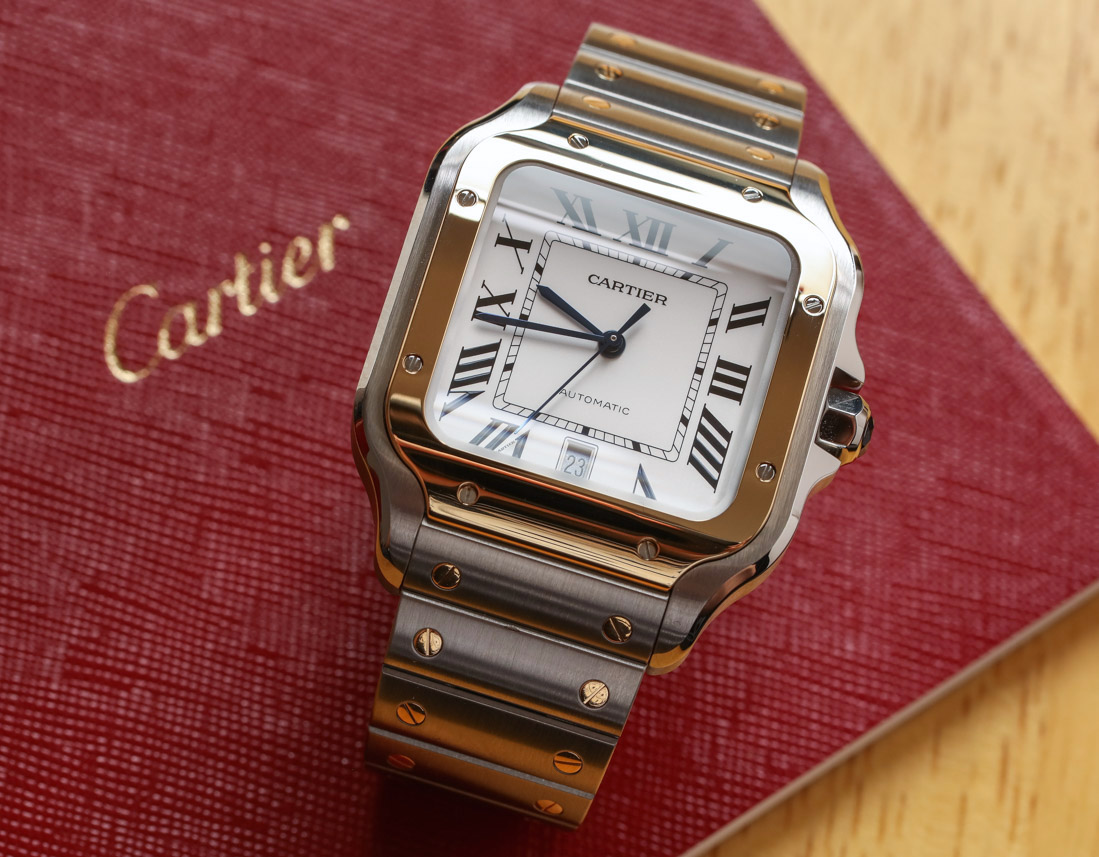
When Cartier released the previous generation “Santos 100” collection in 2004, it was in honor of the 100th anniversary of what is one of the first original watch designs ever created. I reviewed the Cartier Santos 100 here on aBlogtoWatch a couple years ago and still feel very fondly about that model – but more on that later. Today my focus is on the new “Santos de Cartier” Large Model that Cartier released in early 2018. Cartier wanted to make sure the new Santos watches would hit stores soon after the debut (a practice not very common in the watch industry) and early reports are that sales of the new Santos models are strong. The specific model I reviewed is the Cartier Santos reference W2SA0006, which has a two-tone steel and 18k yellow gold case as well as the larger 39.8mm case (Cartier also produces a smaller 35.1mm wide version of the new Santos).
There is a lot to say about the Cartier Santos for 2018 and I discussed a lot of the overall collection details and highlights on aBlogtoWatch in this article here. In that article you’ll read more about the available models (and their prices) as well as what Cartier is trying to accomplish with the new Santos collection. This review will build on my discussion of the Santos in previous articles such as the above linked-to Santos 100 review.
What I also do in this article is present some pictures of both this new Cartier Santos W2SA0006 as well as what I consider to be the watch’s previous generation model (that is uncommon due to its limited distribution), which is the Santos 100 W200728G. That former model is uncommon because it offered a full bracelet as opposed to just a strap, which most of the Santos 100 watch models were equipped with. I found the comparison of these two watches to be very interesting because you can clearly see what is similar in the models as well as what is different.
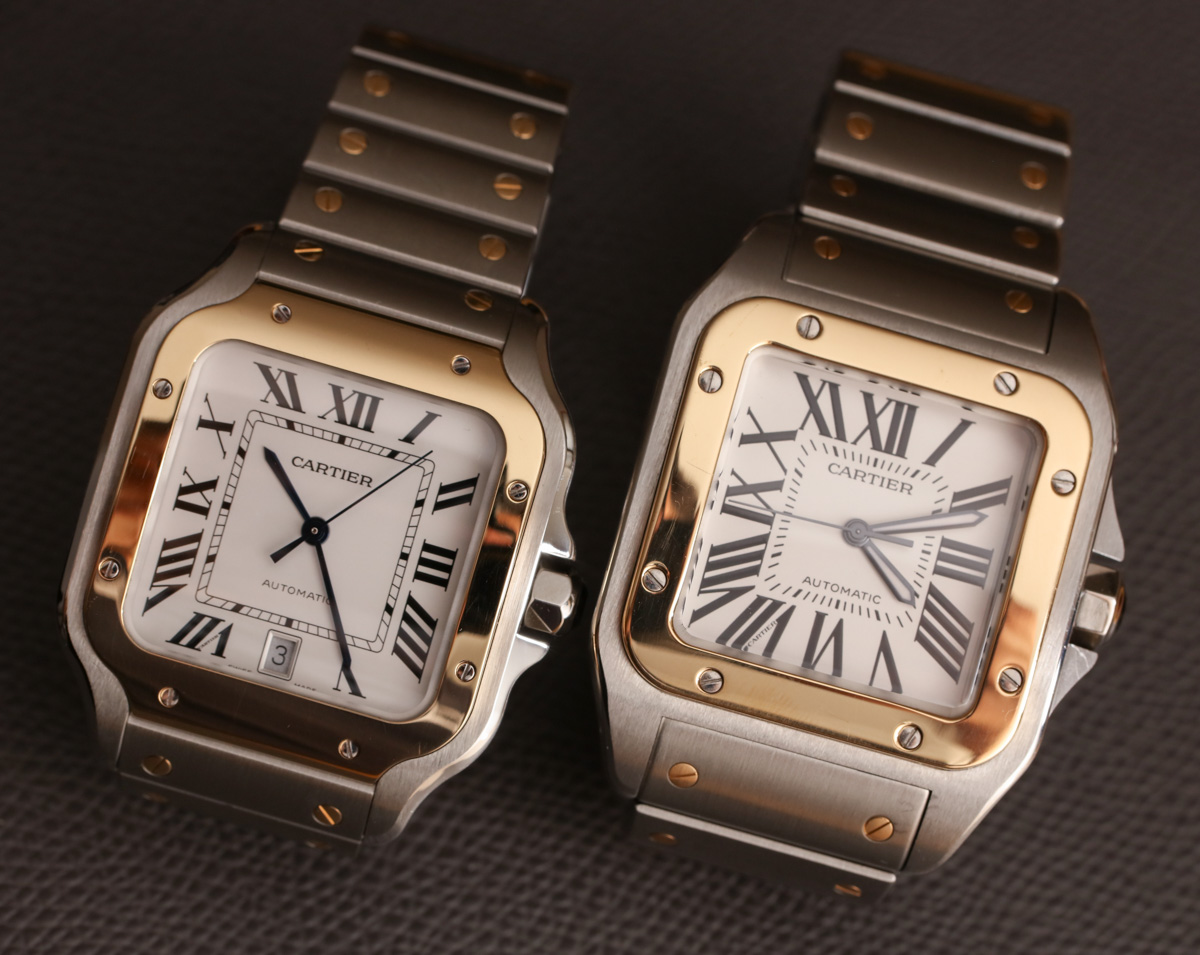
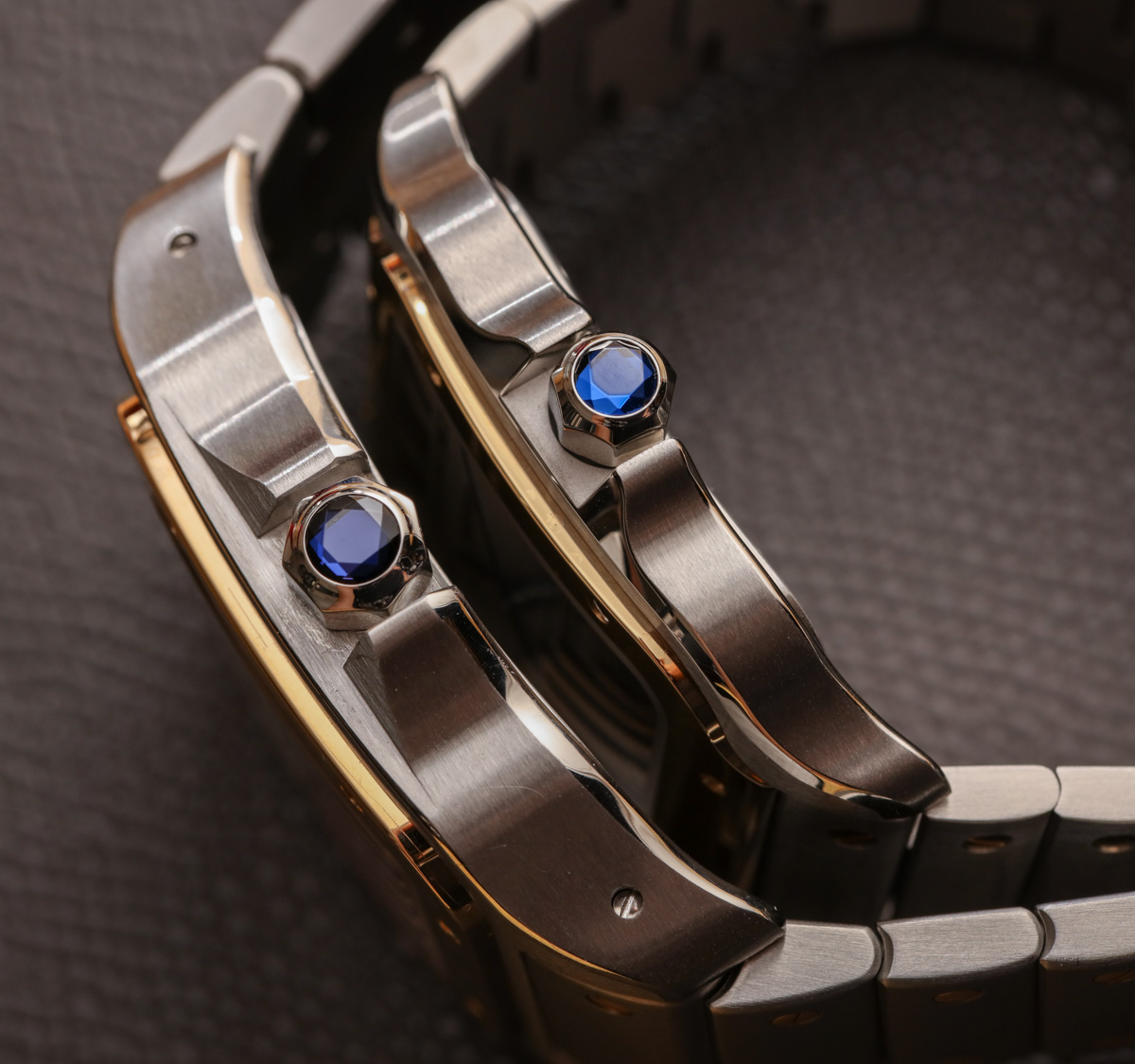
Let me sum up the major highlights of the new for 2018 Cartier Santos watches. First, the cases and bracelets are significantly thinner and for some people, probably more comfortable to wear (as compared to the previous generation large-case models, like the Santos 100 Large). There is also the new bezel design which isn’t a huge element, but it does offer a rather distinctive look for the new models. The case contains an in-house automatic movement, and of course the biggest news is the quick release (“QuickSwitch” as Cartier calls it) bracelet/strap system, as well as the tool-less link changing system (“SmartLink”) that lets you adjust the bracelet quickly, easily, and without tools (assuming you currently have fingernails).
My overall impressions of the Cartier Santos Large Model are very good. Some also say that the smaller model can also be worn as a men’s watch, but I’m pretty sure that in the West, the vast majority of 35.1mm wide Santos models will be sold to women. Aside from the size, the primary difference between the larger and smaller Santos model is the placement of a date window display (which exists on the larger model but not on the smaller model).
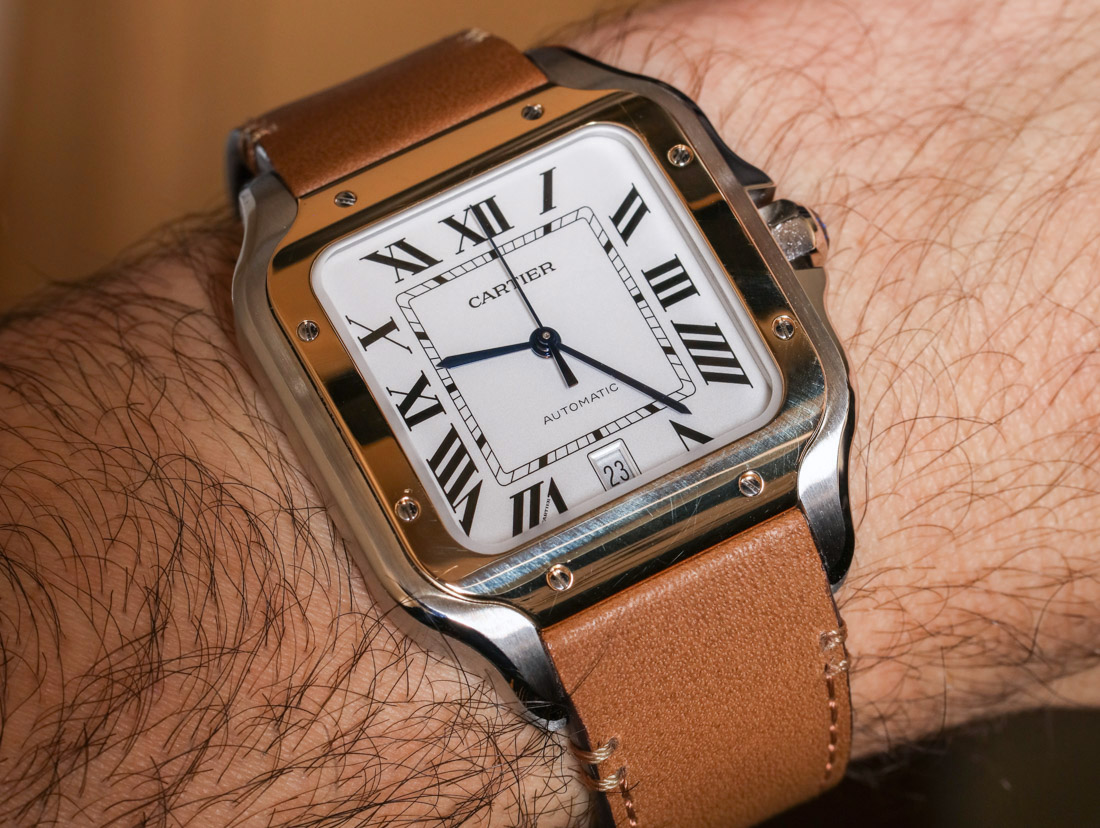
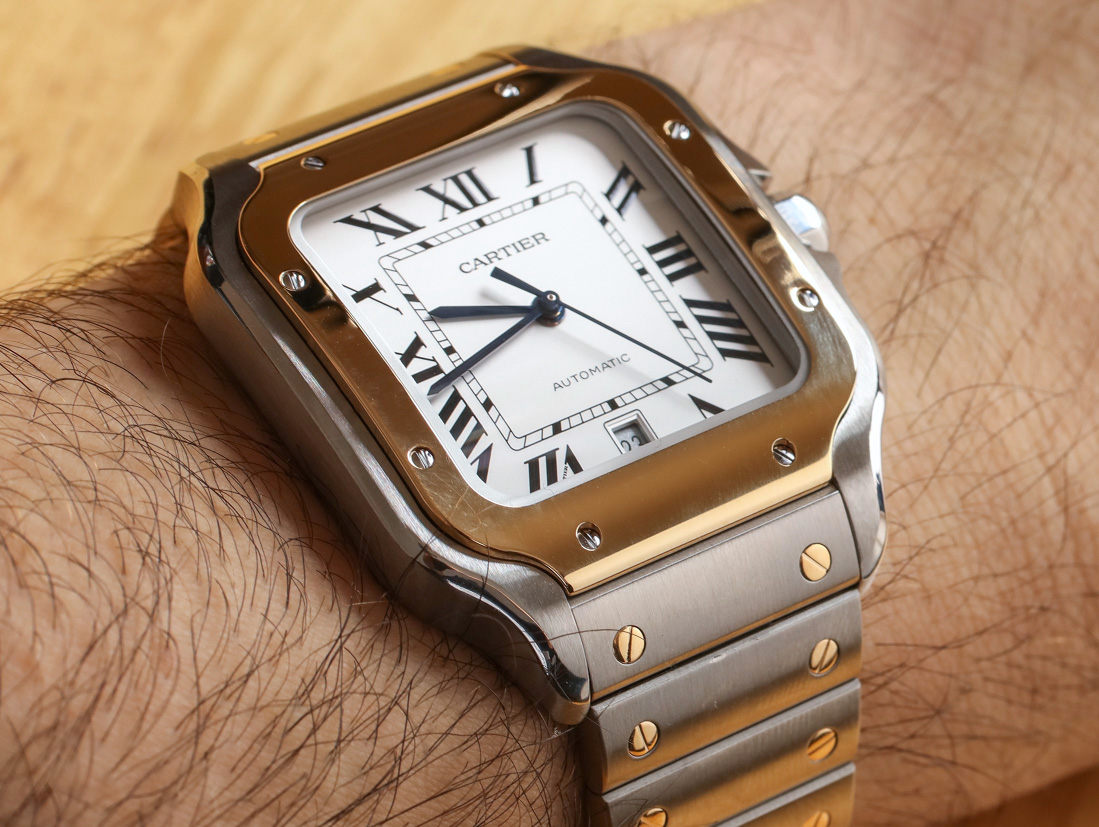
Compared to the previous generation Santos 100 Large, the new 9.08mm thick, thinner Santos model wears a lot more like a dress watch. “Thin is in” when it comes to wristwatches. There are always cyclical design trends and this is not the first time a company has championed a thinner design as opposed to something larger. If you are someone who wears sleeves or generally likes your watches to be a bit more “out of the way,” then the thinner profile of the new Cartier Santos watches will certainly appeal to you.
In steel the new Santos case is water-resistant to 100m and has an elegantly curved sapphire crystal. The case is well-made with both brushed and polished surfaces. Set in the crown is a blue spinel cabochon. Cartier once used sapphire crystal cabochons, but they only do that on their high-end models these days. You can see just how similar the newer and older Santos cases are from a design perspective. This includes much of the crown guard structure as well as the geometric crown itself. The watch is available in all steel (or all pink or yellow gold), but I prefer the two-tone look of the watch in steel and 18k yellow gold the most. One of the reasons is that the gold screws in the bracelet contrast more and add visual interest. Second is the same increase in contrast, thanks to the gold bezel.
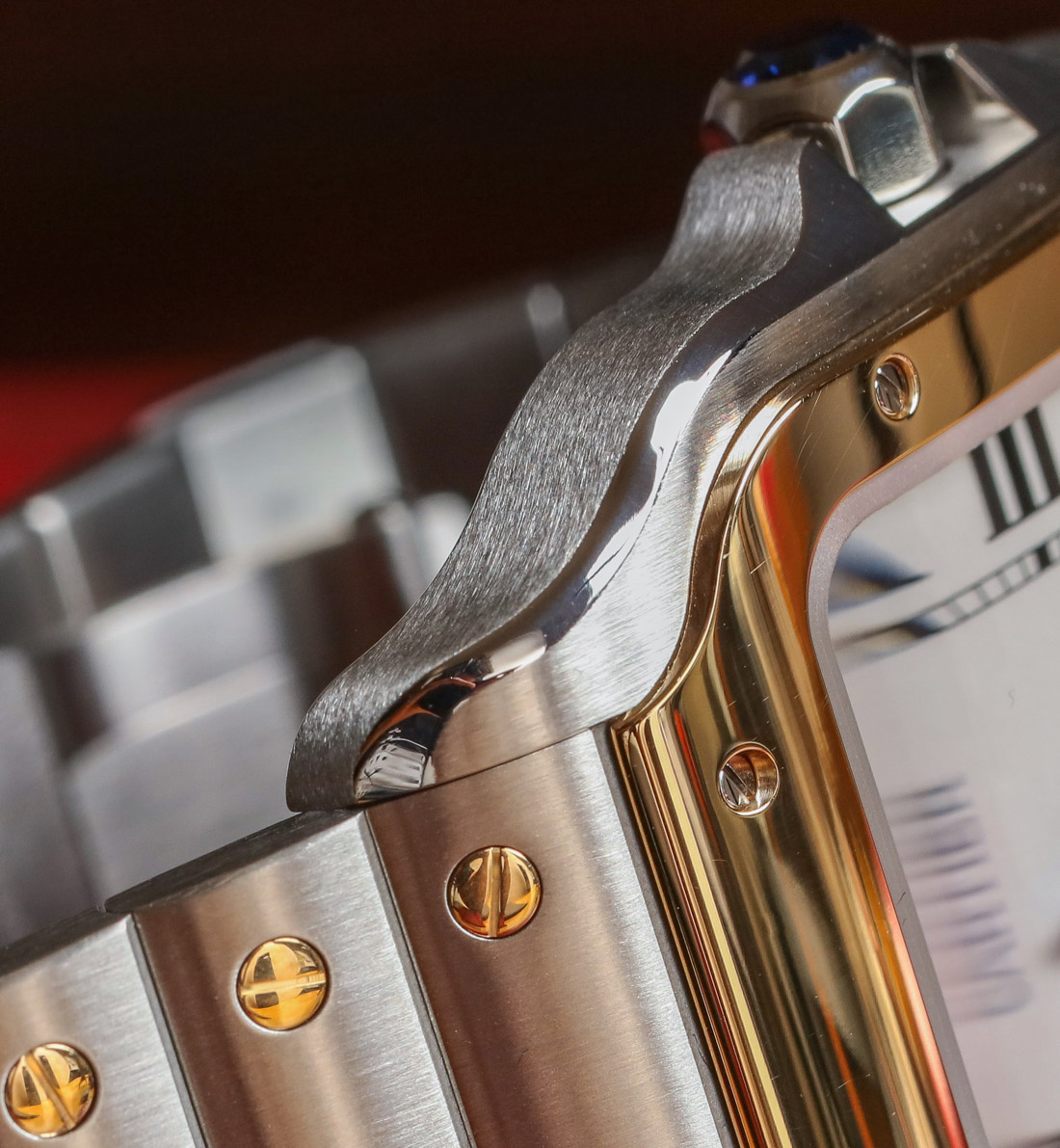
For 2018 Cartier “radically” redesigned the iconic square bezel of the Santos so that it is no longer a square. The upper and lower sections of the bezel have been extended with a lip. The intention appears to be a visual connection between the strap/bracelet and bezel. On the previous generation Santos 100 this was not the case and the lug/bracelet structure was actually larger and wider than on the newer Santos. On both the newer and older Santos models the bracelet tapers a bit (which is good). The older Santos 100 has a bracelet that was 23mm wide where it connected to the case, and on the new Santos Large Model the bracelet is 21mm wide where it connects to the case.
I am going to spend a good deal of time talking about the bracelet because it is both a key part of this timepiece as well as an area which I believe requires a lot of discussion. Partially because I don’t think either the new or old bracelet would win in a fight. In fact, Cartier didn’t (in my opinion) actually “replace” the older generation Santos 100 with the new generation models (even though the old versions are technically no longer produced). Rather, Cartier released a new flavor of the Santos which is perhaps more ready to compete in today’s tricky luxury watch market.
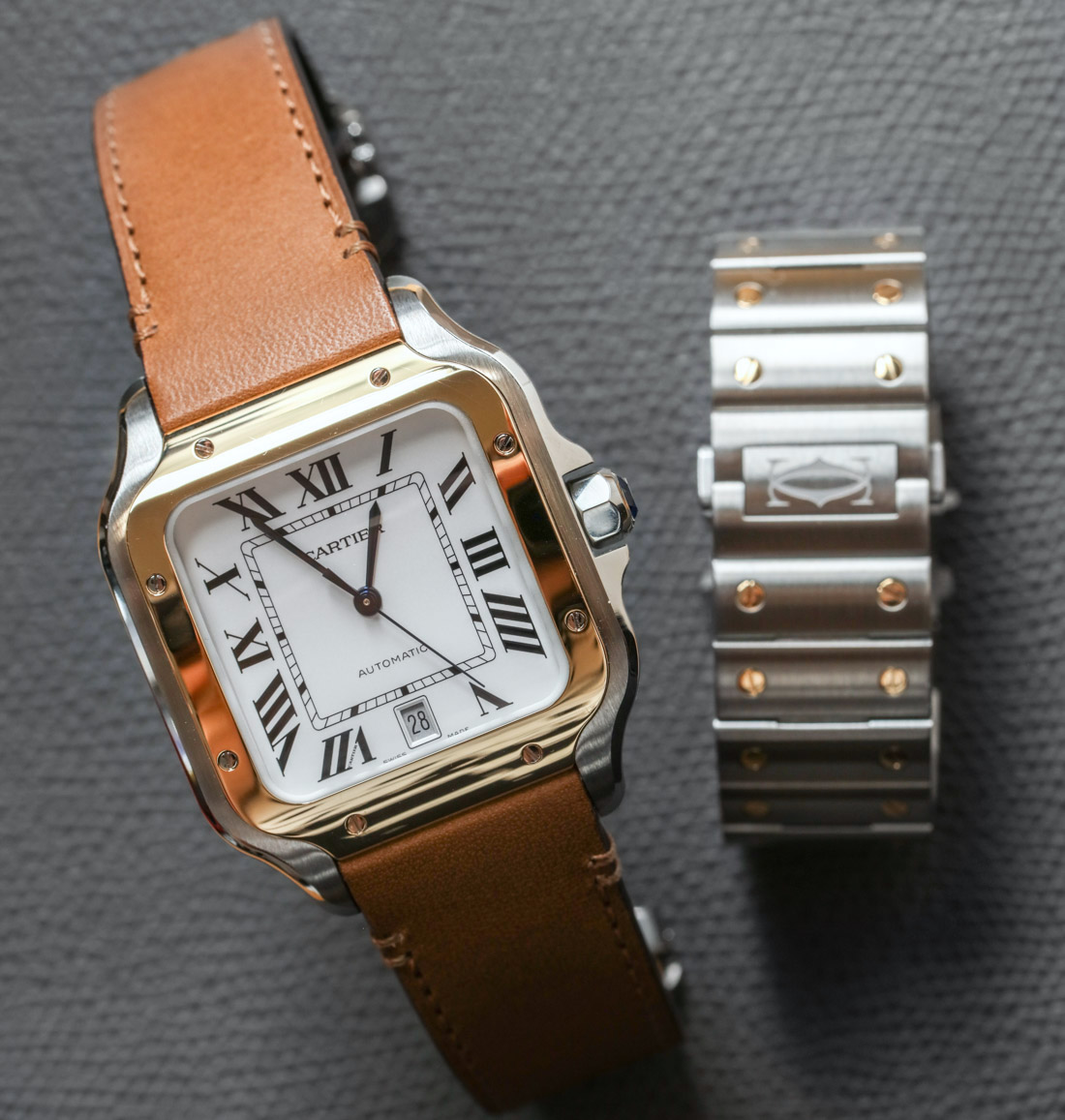
My fondness for the previous generation Cartier Santos 100 is specifically for things that the new generation models attempted to leave in the past. The chunky, masculine, and elegant Santos 100 was by no means as versatile or diplomatic as the new generation models that Cartier designed to tone down some of the previous model’s polarity. With that said, I must say that I regret the decision to design a simpler deployant for the new generation models. The bracelet closes with a simple butterfly-style deployant. It’s decent but I don’t like the pushers that stick out like ears under the bracelet. What I really miss is the more complicated deployant of the previous generation model. For those pieces Cartier designed a more elaborate deployant that mimicked the aesthetics of the case including a plate in gold.
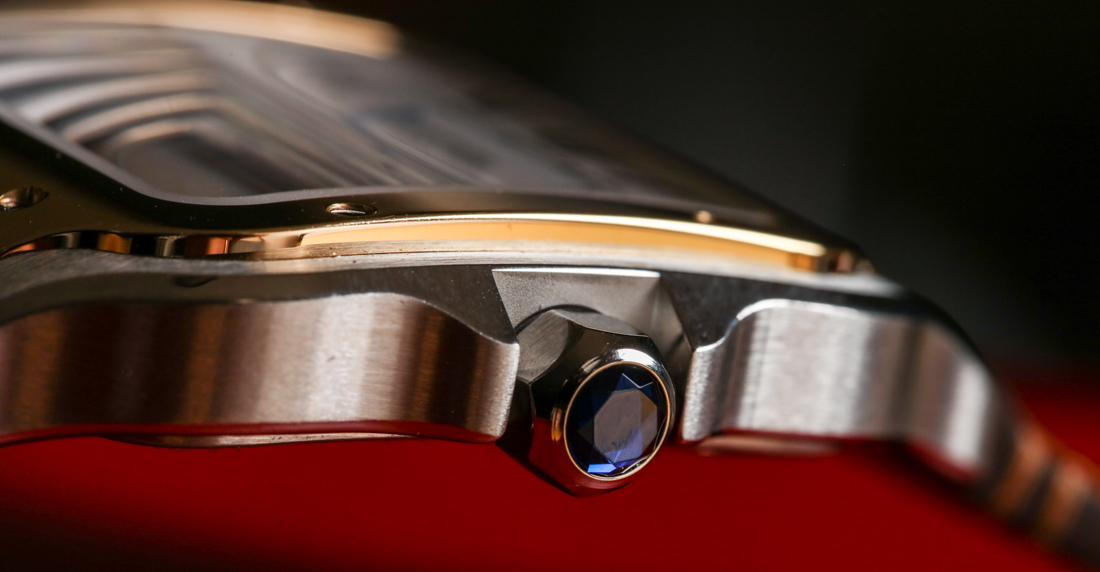
Of course, the previous generation bracelet didn’t have the fancy engineering of the new Santos bracelet which has both the QuickSwitch and SmartLink systems. Cartier was smart to include both a bracelet and a brown leather strap with the Santos. Of course, you can likely buy additional straps from Cartier, but with the proprietary strap connection system you won’t be able to use aftermarket straps for the watch. That’s not a big deal though, because even though Cartier will charge you a Cartier-size price for their straps, they are also of a very respectable quality.

